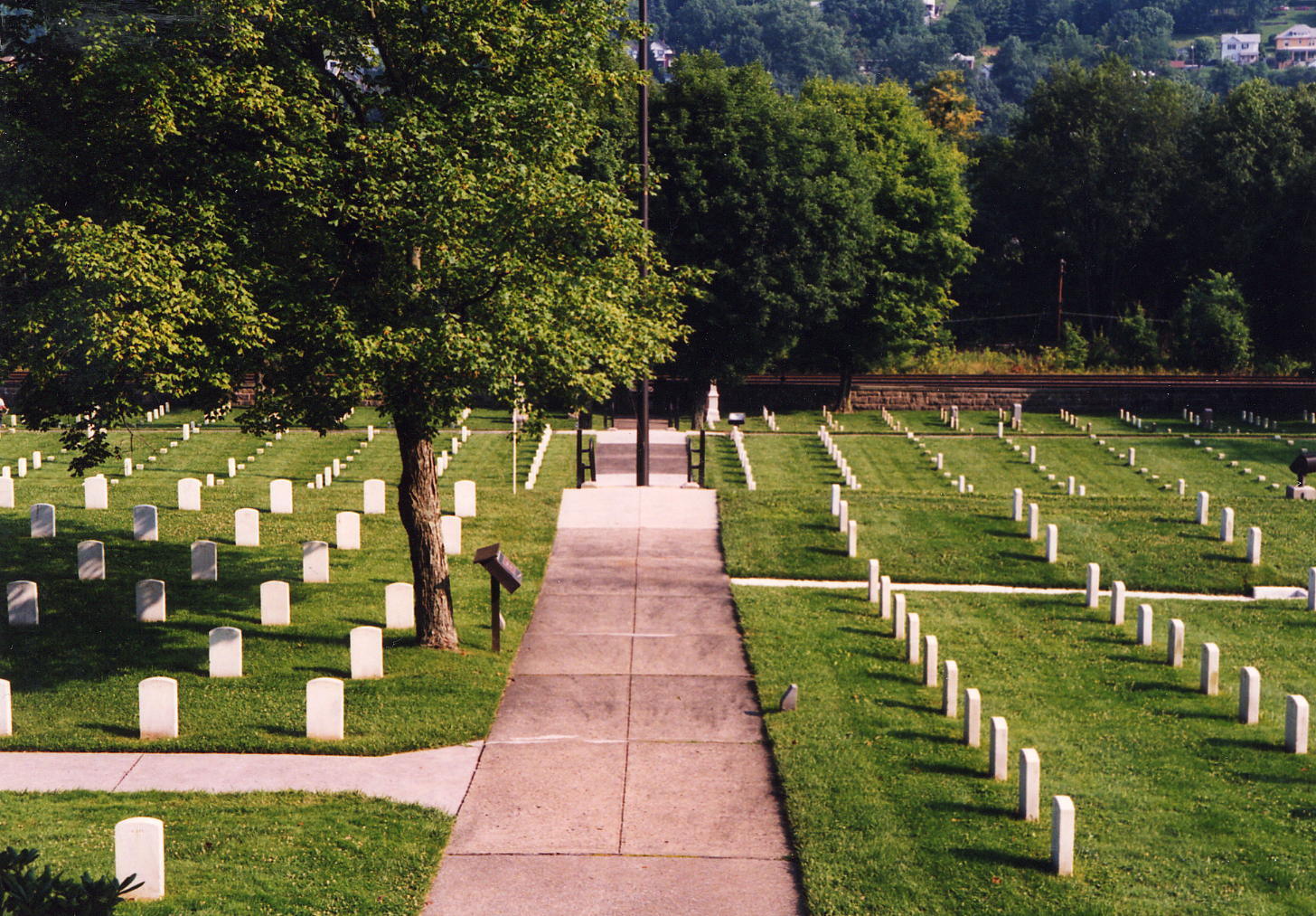Grafton National Cemetery
431 Walnut Street
Grafton, WV 26354
Phone: (304) 265-2044
FAX: (304) 265-4336
|
Office Hours:
The office at the Grafton National Cemetery is closed. For assistance please contact the office at the West Virginia National Cemetery.
Visitation Hours:
Open daily from dawn to dusk.
|

|
Burial Space: This cemetery is closed to new interments. However, space may be available in the same gravesite for eligible family members.
Acreage: 3.2
Number of Interments
Thru Fiscal Year 2008: 2,155
General Information Kiosk on Site? No
Floral/Ground Regulations
|
Directions from nearest airport:
The Grafton National Cemetery is in North Central West Virginia, located on Walnut Street in Grafton, West Virginia, 16 miles East of Clarksburg, West Virginia. From Interstate 79, take Exit 124 (Jerry Dove Drive-West Virginia-279 E), then onto Route 50 East for 14 miles.
|
GENERAL INFORMATION
Military Funeral Honors
The Grafton National Cemetery is fortunate to have the Taylor County Color Guard. This is a group of retired VFW, DAV and the American Legion members. Upon request, they will perform Military Funeral Honors for any veteran to be interred in this cemetery. They perform a very dignified and compassionate service and consider it an honor to do this for a fellow comrade. Please contact the cemetery staff for further information.
back to top
HISTORICAL INFORMATION
Grafton National Cemetery is located in West Grafton, Taylor County, W.Va.
In 1867, Maj. R. C. Bates was ordered by the War Department to locate a permanent burial site for the Union soldiers who had died in hospitals and battlefields throughout West Virginia. Bates chose the Grafton location because it was relatively level in a region noted for mountainous terrain and it was near Maple Avenue Cemetery where many war dead had already been buried. The federal government appropriated the three-acre site in 1867. The steep slope was graded into three terraces with a walkway down the center that divides the cemetery into two equal parts. The first interments were in the lower two terraces: 1,252 Union soldiers, 613 of them unknown. Six-inch square markers distinguish the unknown remains. Approximately half the original interments came from Clarksburg, W.Va. Other remains were brought to the national cemetery from Wheeling, Rich Mountain and Fayette County.
In 1903, Thornesberry Baily Brown was reinterred at Grafton National Cemetery. Brown was rumored to be the first Union casualty of the Civil War, having been killed May 22, 1861, when he refused a Confederate sentry’s order to halt and shot the sentry in the ear. The sentry responded by shooting Brown through the heart. The Brown monument is a marble obelisk that was erected by the GAR, Reno Post No. 7, and dedicated on April 28, 1904.
Grafton National Cemetery was listed on the National Register of Historic Places in 1982.
back to top
NOTABLE PERSONS
back to top
FLORAL/GROUNDS REGULATIONS
Cemetery policies are conspicuously posted and readily visible to the public.
Floral arrangements accompanying the casket or urn at the time of burial will be placed on the completed grave. Natural cut flowers may be placed on graves at any time of the year. They will be removed when they become unsightly or when it becomes necessary to facilitate cemetery operations such as mowing.
Artificial flowers and potted plants will be permitted on graves during periods when their presence will not interfere with grounds maintenance. As a general rule, artificial flowers and potted plants will be allowed on graves for a period extending 10 days before through 10 days after Easter Sunday, Memorial Day and Veterans Day.
Christmas wreaths, grave blankets and other seasonal adornments may be placed on graves from Dec. 1 through Jan. 20. They may not be secured to headstones or markers.
Permanent plantings, statues, vigil lights, breakable objects and similar items are not permitted on the graves. The Department of Veterans Affairs does not permit adornments that are considered offensive, inconsistent with the dignity of the cemetery or considered hazardous to cemetery personnel. For example, items incorporating beads or wires may become entangled in mowers or other equipment and cause injury.
If you are unable to get your flowers before our clean off, contact the office and we will hold them for no longer than 10 days.
back to top
|


